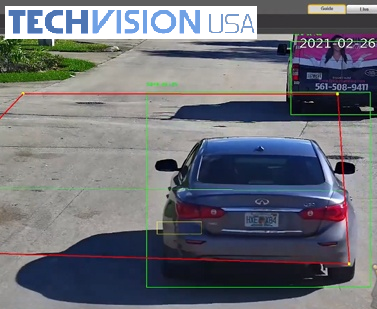CCD is an acronym for Charged Coupled Device and is one of the key components in most security cameras used to produce an image. Some cameras also use a complimentary oxide semiconductor or CMOS to produce an image. However, the majority of security cameras today use a CCD. So, let’s take a closer look at the CCD and compare it with the CMOS and see how they work with security cameras.
Manufacturers’ technologies vary, for example some use filters, prisms and arrangements of three CCDs, but the primary function of both CCDs and CMOSs is to convert light into electrons. They do this much like solar cells convert light into electricity. They also resemble the look of a solar cell. CCDs and CMOSs are usually embedded on an Integrated Circuit (IC) chip and come in various sizes.
CCDs can be thought of as a photoactive layer over a series of pits. When the photo sensitive layer is struck by light, packets of electrons gather in these pits. CMOSs convert light to electrons in the same manner. The difference between the CCD and the CMOS is how they read and/or transfer the electrons.
A CCD basically moves the charge to one place on the chip where it can be read, then each pixel’s value is given a digital value by an analog-to-digital converter (ADC). CMOSs on the other hand, use transistors to move the charge with several transistors at each pixel. In addition, the CMOS uses conventional wiring to facilitate this process.
The two methods lead to benefits and detriments for each. Here’s a partial list:
• CCDs produce a higher quality image
• CMOSs have a much lower sensitivity to light
• CCDs consume as much as 100 times the power of a CMOS
• CCDs generally have more pixels
• CCDs are usually more expensive than CMOSs
Although CCDs are more expensive than CMOSs, their greater sensitivity to light makes them an excellent candidate for use in security cameras. CCDs actually react to an impressive 70 percent of the light that strikes them. In addition, most manufactured CCDs are inherently sensitive to near-infrared radiation which makes them an excellent candidate for night vision, infrared, or near zero LUX video recording.
There are digital security cameras that contain CMOS chips, and these are usually cheaper than CCD cameras, but they tend to produce a lower quality image and do not function well in low light conditions. The biggest detriment to CCDs when compared to CMOSs in security cameras is their power consumption. However, security cameras normally have their own power supply making power consumption a non-issue. One use where a CMOS could have an advantage over a CCD would be for a stand-alone, battery-powered digital camera. The CMOSs power demand is much less than the CCD, so this might make a suitable camera, but there still is the issue of image quality.
CCDs are made by a variety of manufacturers in a variety of sizes, in fact too many to list here. If you have owned a security camera and you are satisfied with its image quality and performance, it may benefit you to note the manufacturer of the CCD for future reference. However, if you look at the specifications of a variety of camera manufacturers, you’ll note that the same make and size CCD is often used, yet you may like one camera over the other. In that case, it would be more beneficial for future purchases to base your selection on the camera manufacturer.
CCD’s are manufactured in sizes ranging from less than ¼ inch to over 1 1/3 inches. Usually “the bigger is better” theory applies here. Larger CCDs usually produce higher resolution images and may be more sensitive to light. However, for most security cameras the two most popular sizes of CCDs seem to be the ¼ and 1/3 inch. Again, there are many factors that determine the optimum size for a security camera CCD.
This should give you some good working knowledge of what a CCD is and what it does to make things work inside a security camera. Remember that CCDs are usually higher performers than CMOSs but at a cost. Remember too that if you are satisfied with a particular camera brand, you shouldn’t put too much emphasis on the CCD specifications as there are many other performance factors that can be attributed to the camera manufacturer.











